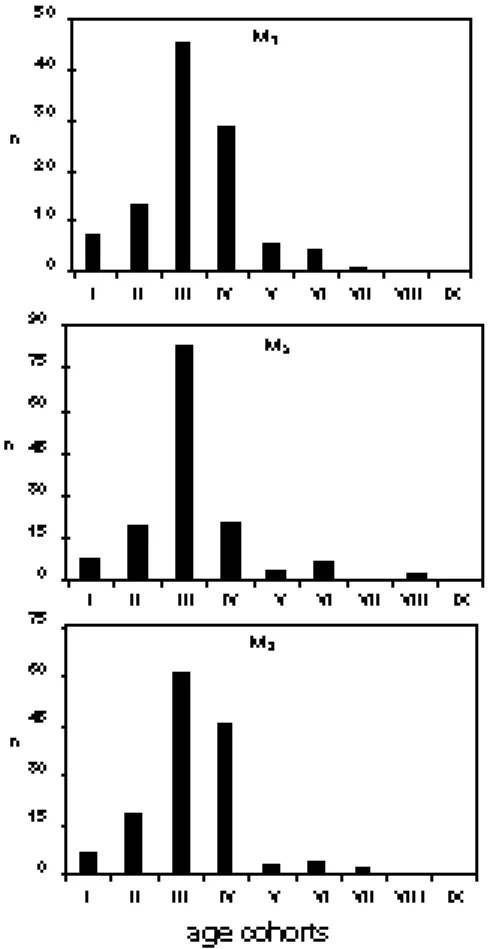TítuloAge structure and sex ratio of cave bears in the Zoolithenhöhle, southern Germany
Texto completo
(2) 290 WEINSTOCK, J.. CAD. LAB. XEOL. LAXE 26 (2001). INTRODUCTION. Swabian Alb (Baden-Württemberg, south-western Germany), notably the Bärenhöhle-Hohlenstein in the Lone Valley and the Sibyllenhöhle near the town of Kirchheim/Teck (figure 1), have been famous for their vast amount of cave bear remains since the second half of the 19th century, when they were presented in publications by O. FRAAS (1862) and E. FRAAS (1899) respectively. In spite of this long history, very few investigations on cave bears (either Ursus spelaeus or U. deningeri) from southern Germany have been carried out – or published – in the last few decades (see BOESSNECK & von den DRIESCH, 1973; WEINSTOCK, 2000a). One of the reasons for the paucity of studies on cave bears from southern Germany is probably the destruction or dispersal of some of the most important collections, such as that of the old excavations at the Zoolithenhöhle, the Bärenhöhle and the Sibyllenhöhle. According to K.-D. Adam, former curator of Quaternary Mammals in the State Museum for Natural History in Stuttgart, Germany, large parts of the collections from the last two of these sites were lost, or selectively removed, so rendering any study at the population level useless (KURTÉN, 1976). Nonetheless, these collections remain of value (WEINSTOCK, 2000a). In this contribution, however, I concentrate on the material from the Zoolithenhöhle that was recovered from more recent excavations by Heller and Groiss in 1971 (HELLER, 1972; GROISS, 1979). While the investigation of this material has not yet been completed, enough preliminary informa-. In the last 20 years there has been an interesting shift in cave bear research (both Ursus spelaeus and U. deningeri) from almost purely anatomical and palaeopathological questions to more palaeobiologicaly oriented studies such as those focusing on demography, diet, or evolution. Witness to this shift are the numerous publications based on Austrian, British, Spanish, and Turkish collections (e.g. ANDREWS & TURNER, 1992; FERNÁNDEZ MOSQUERA, 1998; GRANDAL-d'ANGLADE, 1993; GRANDAL-d'ANGLADE & VIDAL ROMANÍ, 1997; GROISS, 1994; RABEDER, 1983, 1991; REISINGER & HOHENEGGER, 1998; STINER, 1998; STINER et al., 1998; TORRES PÉREZHIDALGO, 1984; TORRES PÉREZHIDALGO et al., 1991). It is only though understanding of the palaeobiology of this taxon that we will be able, eventually, to explore some of the many questions that remain to be answered, such as the reasons for its relatively restricted (basically European) geographical range, or the cause(s) for its extinction. Interestingly, southern Germany, while being one of the ‘classic’ cave bear areas, has not contributed much to this new research. It was, in fact, in southern Germany that the earliest discoveries of cave bear bones were made by J. Esper in 1774, and the holotype specimen of Ursus spelaeus comes from the Zoolithenhöhle (also known as the Gaillenreuth cave), a site in the Franconian Jura in south-eastern Germany (ROSENMÜLLER & HEINROTH, 1794). Some sites in the.
(3) CAD. LAB. XEOL. LAXE 26 (2001). Age structure and sex ratio of cave bears 291. Figure 1. Map of Germany showing the locations of the Zoolithenhöhle, Bärenhöhle and Sibyllenhöhle.. tion is available to suggest some very interesting patterns in the sex ratio and age structure of this population. THE ZOOLITHENHÖHLE The Zoolithenhöhle is located near Burggaillenreuth (470m above sea level) in the Franconian Alb, Bavaria. The structure of the Zoolithenhöhle is complicated (figure 2). The entrance is located in the North and from here a large chamber extends south for about 40m. Beyond runs a maze of irregular chambers, which are often interconnected through narrow, sometimes vertical passages. The cave owes its name to the word ‘zooliths’ that ESPER (1774) coined to denote the. remains of extinct mammals he found in the cave. He realized that the vast majority of the finds belonged to bears. According to HELLER (1972), the remains of more than 1000 individuals were recovered at the site. From the very abundant faunal material from the early investigations, the whereabouts of only a small fraction is known (HELLER, 1972; Groiss, personal communication). In 1971, new excavations were carried out in a number of different areas which had not been dug or disturbed previously (GROISS, 1972). Again, considerable quantities of faunal material dating to the last glacial were recovered, consisting mostly of Ursus spelaeus, but also including other taxa, notably Gulo gulo, Canis lupus,.
(4) 292 WEINSTOCK, J.. CAD. LAB. XEOL. LAXE 26 (2001). Figure 2. The Zoolithenhöhle (after NIGGEMEYER & SCHUBERT, 1972).. Crocuta crocuta, and Panthera leo (HELLER, 1972; GROISS, 1979). Absolute radiocarbon dates from two different locations within the cave range from ca. 29-24 ka BP (GROISS, pers. comm.). METHODS Among the Ursidae, males are always larger than females. This size difference is apparent in the width and depth of the long bones. However, the degree of sexual dimorphism varies, according to species, between 10-20% to 50% (STIRLING, 1993). A clear sexual dimorphism exists also in the canines (KOBY, 1949). Thus osteometrical data can be used to establish the relative proportions of both sexes in an. assemblage. In this investigation, measurements were taken on a number of postcranial limb elements showing fused epiphyses (humerus, radius, intermedioradiale, astragalus, metacarpus II-V, and metatarsus II-IV), as well as on the lower and upper canines. Measurements were taken with a pair of digital callipers to the nearest 0.1mm following the definitions of GRANDAL- d'ANGLADE (1993) and von den DRIESCH (1976). The distribution of absolute values in some measurements of postcranial elements shows an overlap between males and females, however, bivariate plots can usually separate between the sexes accurately and absolutely, and can thus be used to calculate sex ratios. Sex ratios were cal-.
(5) CAD. LAB. XEOL. LAXE 26 (2001). culated for each of the postcranial elements and the canines. It must be stressed that different skeletal elements can, and often do, show somewhat varying sex ratios, not only in bears but in ungulates as well (c.f. GRANDAL-d'ANGLADE & VIDAL ROMANÍ, 1997; WEINSTOCK, 2000a, 2000b; see below). These variations may sometimes be related to sample size but they are also a result of the fact that different skeletal elements represent somewhat different age classes (WEINSTOCK, 2000b). The age structure was analysed using the method developed by STINER (1994, 1998). In this method, each tooth is assigned to one of nine different categories or cohorts (I-IX, from young to old) according to its stage of eruption and/or its occlusal wear (figure 3). Stage I, for example, includes all permanent teeth from the germ stage to those with root formation up to 50% complete. Stage II comprises. Age structure and sex ratio of cave bears 293. teeth which are fully (or nearly) erupted, their roots more than 50% complete, but with no visible wear on their occlusal surface. By stage III, some wear of the occlusal enamel is evident but little or no dentin is exposed. At the other extreme, stages VIII and IX include teeth which are very heavily worn, with little or no enamel remaining on its occlusal surface, and where the pulp cavities are frequently exposed (STINER, 1998). These nine cohorts can be collapsed into three age stages: juvenile (I-III), prime adult (IVVII), and old adult (VIII-IX) (STINER, 1998). In the Zoolithenhöhle mandibles and loose mandibular teeth are much more abundant than maxillaries and maxillar teeth, and therefore the age structure analysis was based only on the former. It must be stressed that mandibles and loose teeth from individuals in cohorts I and II (i.e. very young animals) are less resistant. Figure 3. Wear stages (cohorts) of M1 (after STINER, 1998)..
(6) 294 WEINSTOCK, J.. to mechanical damage than those in older cohorts and therefore this age group may be underrepresented due to post-depositional events. RESULTS Sex ratios As mentioned above, not all of the Ursus skeletal elements from this site have been investigated yet. Nevertheless, preliminary results show a very clear trend concerning sex-ratios. Canines, metapodials, humeri, and radii all indicate that adult and subadult males were very rare at the site (figure 4 and table 1). The percentage of females fluctuates according to skeletal element varying between 81% and 96% (mean = 90%; median = 87%). It must be stressed that no part of the material retrieved in the 1971 excavations at the Zoolithenhöhle has been subsequently lost, in contrast to the other south. CAD. LAB. XEOL. LAXE 26 (2001). German sites. This is important as it demonstrates that a very biased sex ratio need not be attributed to post-excavational factors. Age structure The large numbers of mandibles and quantity of dental material present at the Zoolithenhöhle allow a reliable analysis of the age structure of the bears (figure 5). figure 5 shows the relative frequencies of nine age cohorts (STINER, 1994, 1998) based on the three mandibular molars. In these graphs, loose teeth are disregarded; their inclusion, however, leads to identical results. A number of facts are apparent. The distribution is clearly unimodal with the peak at cohort III. These are probably older juveniles which had just become independent from their mother. Somewhat older individuals (stage IV) are also well represented. Prime adults other than those in stage IV (V-VII) are, however, very rare. New-born and very young. Table 1. Number of bones from male and female cave bears and relative abundance of females in the Zoolithenöhle. Counts made from bivariate plots..
(7) CAD. LAB. XEOL. LAXE 26 (2001). Age structure and sex ratio of cave bears 295. Figure 4. Examples of bivariate plots of different skeletal elements used to calculate sex ratios.. animals (stages I-II) are relatively scarce. Since the fragile mandibles and bones of individuals in these age categories - especially in stage I - are more prone to mechanical destruction than those of older animals, this could have taphonomic rather than behavioural or demographic causes. All in all, juveniles (stages I-III) comprise 62%-87% of the assemblage – depending on which tooth is being analysed. However, the most striking characteristic of the age structure of the cave bears from the Zoolithenhöhle is the almost complete absence of very old individuals (stages VIII-IX). These age classes are usually. well represented at other sites regarded as hibernation dens, such as the BärenhöhleHohlenstein (WEINSTOCK, 2000a) and Yarimburgaz (STINER, 1998). DISCUSSION The interpretation of the sex ratio and age structure of the cave bear assemblage from the Zoolithenhöhle in palaeobiological terms is not straightforward. On the basis of their location beneath a steep ledge, finds from the original excavations (ESPER, 1774) were regarded as being rests from individuals which, while roa-.
(8) 296 WEINSTOCK, J.. Figure 5: Age structure histogram for the Zoolithenhöhle bear population based on eruption and occlusal wear of mandibular molars. ‘Young’ (stage III) and animals slightly older (Stage IV) comprise most of the population. Neonates (stages I-II) and 'prime adults' (stages IV-VII) are very rare, while 'old adults' (stages VIII-IX) are virtually absent.. ming around the cave, accidentally tumbled down and either died from the fall or were unable to climb out (KURTÉN, 1976; ZAPFE, 1954). The more recent excavations show, however, that the taphonomic history of many of the finds is. CAD. LAB. XEOL. LAXE 26 (2001). probably more complicated. The large accumulations of bear bones in some parts of the cave are regarded as being caused by water transport (GROISS, 1972). The sources of these accumulations, nonetheless, are skeletons of bears that died elsewhere inside the cave (GROISS, 1972). Did most of these bears therefore perish during hibernation? The relatively common presence of mandibles with erupting permanent canines would seem to point in this direction. In Ursus arctos the eruption of this tooth takes place between 12-14 months of age (DITTRICH, 1960). Since brown bears are born in winter (November to February), these mandibles represent individuals who died during their second winter. Likewise, mandibles with still unerupted M1 (i.e. younger than 5 months) also suggest winter mortality. If mortality did occur during hibernation, the age-at-death profile should be Ushaped, corresponding to an attritional mortality (STINER, 1994, 1998). However, as Figure 5 shows, this is not the case. On the other hand, while it is conceivable that some bears were attacked by other predators during hibernation, the mortality profile in the Zoolithenhöhle does not take the 'living structure' pattern which would be expected in that case (STINER, 1998). Perhaps the most puzzling aspect of the assemblage is the very biased sex ratio in the cave, with females comprising between 82%-96%, depending on the skeletal element analyzed. Great variability in cave bear sex ratios has been observed between assemblages from different sites (e.g. KURTÉN, 1976; WEINSTOCK, 2000a) but has not yet been satisfactorily explai-.
(9) CAD. LAB. XEOL. LAXE 26 (2001). ned (WEINSTOCK, 2000a). The assemblage from the Zoolithenhöhle shows that this variability cannot be dismissed as a product of post-excavation factors; it must have some palaeobiological significance. ACKNOWLEDGEMENTS Many thanks are due to Prof. Th. Groiss for allowing me to examine the material from the Zoolithenhöhle and to. Age structure and sex ratio of cave bears 297. Aurora Grandal for the invitation to make a contribution to this volume. Special thanks are due to J. Sofaer-Derevenski for commenting on the manuscript and for the camomile tea..
(10) 298 WEINSTOCK, J.. REFERENCES ANDREWS, P. & TURNER, A. (1992). Life and death of the Westbury bears. Annales Zoologici Fennici, 28: 139-49. BOESSNECK, J. & VON DEN DRIESCH, A. (1973). Die jungpleistozänen Tierknochenfunde aus der Brillenhöhle . Forschungen und Berichte zur Vor- und Frühgeschichte in Baden Württemberg 4/II. Müller & Gräff, Stuttgart. DITTRICH, L. (1960). Milchgebißentwicklung und Zahnwechsel beim Braunbären (Ursus arc tos L.) und anderen Ursiden. Gegenbaurs Morphologisches Jahrbuch, 101: 1-141. DRIESCH, A. von den (1976). A guide to the measu rement of animal bones from archaeological sites. Peabody Museum of Archaeology and Ethnology, Harvard University, Cambridge. ESPER, J. F. (1774). Ausführliche Nachricht von neuentdeckten Zoolithen unbekannter vierfüßiger Tiere. Georg Wolfgang Knorrs Seel. Erben, Nürnberg. FERNANDEZ MOSQUERA, D. (1998). Biogeoquímica isotópica (d13C, d15N) del Ursus spelaeus del yacimiento de Cova Eirós, Lugo. Cadernos Lab. Xeológico de Laxe, 23: 237249. FRAAS, E. (1899). Die Sibyllenhöhle auf der Teck bei Kirchheim. Zeitschrift der Deutsche geologis che Gesellschaft, 51: 75-88. FRAAS, O. (1862). Der Hohlenstein und der Höhlenbär. Jahreshefte des Vereins für vaterländis che Naturkunde in Württemberg, 18: 156-88. GRANDAL-d'ANGLADE, A. & VIDAL ROMANÍ J. R. (1997). A population study on the cave bear (Ursus spelaeus Ros.-Hein.) from Cova Eirós (Triacastela, Galicia, Spain). Geobios, 30: 723-31. GRANDAL-D'ANGLADE, A. (1993). El oso de las cavernas en Galicia: el yacimiento de Cova Éirós. Ediciós do Castro, La Coruña. GROISS, J. TH. (1972). Paläontologische Untersuchungen in der Zoolithenhöhle bei Burggaillenreuth. Erlanger Forschungen, 5B: 7993. GROISS, J. TH. (1979). Geologische und paläontologische Untersuchungen in der Zoolithenhöhle. Geol. Bl. NO-Bayern, 29: 2650. GROISS, J. TH. (1994). Untersuchungen der Gehirnmorphologie von Ursus deningeri v.. CAD. LAB. XEOL. LAXE 26 (2001). Reichenau und von Ursus spelaeus Rosenmüller (Mammalia, Ursidae) an Schädelausgüssen quartärer Funde aus österreichischen Höhlen. Abh. Geol. B., 50: 115-123. HELLER, F. (1972). Die Forschungen in der Zoolithenhöhle bei Burggaillenreuth von Esper bis zum Gegenwart. Erlanger Forschungen, B5: 7-56. KOBY, F. E. (1949). Le dimorphisme sexuel des canines d'Ursus arctos et d'U. spelaeus. Revue Suisse de Zoologie, 36: 675-687. KURTÉN, B. (1976). The cave bear story. Columbia University Press, New York. NIGGEMEYER, B. & SCHUBERT, D. (1972). Neuentdeckungen in der Zoolithenhöhle bei Burggaillenreuth. Erlanger Forschungen, B5: 5761. RABEDER, G. (1983). Neues vom Höhlenbären: Zur Morphogenetik der Backenzähne. Die Höhle, 34: 67-85. RABEDER, G. (1991). Die Höhlenbären der Conturines. Athesia, Bozen. REISINGER, C. & HOHENEGGER, J. (1998). Sexual dimorphism in limb bones of Late Pleistocene cave bear (Ursus spelaeus, Carnivora, Mammalia) from three caves in Eastern Alps (Austria and Italy). Bolletino della Societá Paleontologica Italiana, 37: 99-116. ROSENMÜLLER, J. C. & HEINROTH, J. C. (1794). Quaedam de Ossibus Fossilibus Animalis cuiusdam, Historiam eius et Cognitionem accuratio rem ilustrantia. Leipzig. STINER, M. (1994). Honor among thieves: A zooar chaeological study of Neandertal ecology. Princeton University Press, Princeton, N.J. STINER, M. (1998). Mortality analysis of Pleistocene bears and its paleoanthropological relevance. Journal of Human Evolution, 34: 30326. STINER, M.; ACHYUTHAN, G.; ARSEBÜK, G.; HOWELL, C. F.; JOSEPHSON, S. C.; JUELL, K. E.; PIGATI, J. & QUADE, J. (1998). Reconstructing cave bear paleoecology from skeletons: a cross-disciplinary study of middle Pleistocene bears from Yarimburgaz Cave, Turkey. Paleobiology, 24: 74-98. STIRLING, I. (1993). The living bears. In: Stirling, I. (ed.) Bears. Harper & Collins, London. TORRES PEREZ-HIDALGO, T. (1984). El oso de las cavernas (Ursus spelaeus RosenmüllerHeinroth) de los niveles inferiores de Ekain. In:.
(11) CAD. LAB. XEOL. LAXE 26 (2001). Altuna, J. & Merino, J.M. (eds.) El yacimiento prehistorico de la cueva de Ekain (Deba, Guipuzcoa). pp.: 297-316. Eusko Ikaskuntza, San Sebastián. TORRES PEREZ-HIDALGO, T., COBO RAYAN, R. & SALAZAR RINCON, A. (1991). La población de oso de las cavernas (Ursus spelaeus parvilatipedis n. ssp.) de Troskaeta'ko-Kobea (Ataun-Gipuzkoa) (Campañas de excavación de 1987 y 1988). Munibe, 43: 3-85. WEINSTOCK, J. (2000a). Cave bears from southern Germany: sex ratios and age structure. A contribution towards a better understanding of. Age structure and sex ratio of cave bears 299 the palaeobiology of Ursus spelaeus. Archaeofauna, 9: 165-182. WEINSTOCK, J. (2000b). Osteometry as a source of refined demographic information: sex ratios of reindeer, hunting strategies, and herd control in the Late Glacial site of Stellmoor, northern Germany. Journal of Archaeological Science, 27: 1187-1195. ZAPFE, H. (1954). Beiträge zur Erklärung der Entstehung von Knochenlagerstätten in Karstspalten und Höhlen. Geologie, 12: 1-60..
(12)
Figure
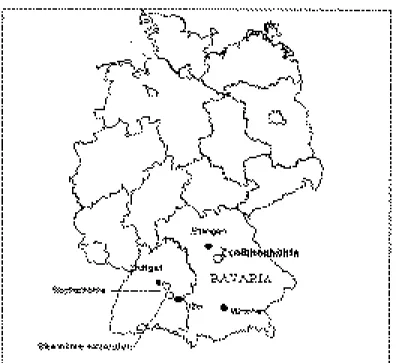
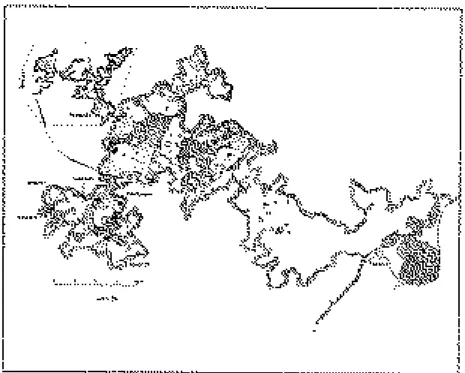
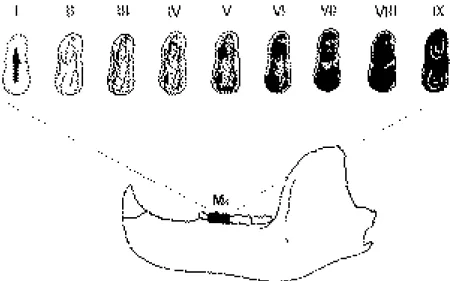
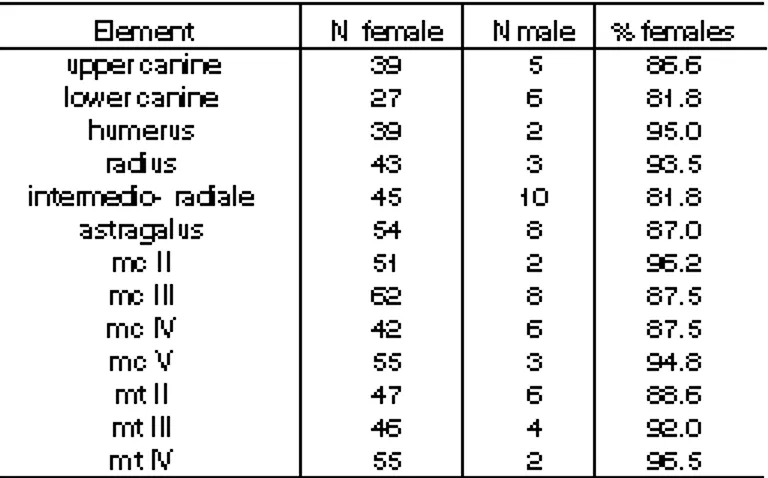
Documento similar
We seek to characterize the transport in a time-dependent flow by identifying coherent structures in phase space, in particular, hyperbolic points and the associated unstable and
The recent test excavations in the entrance cone of Ardales cave give new insight into the human occupation of the site.. A Holocene and late Pleistocene occupation could
In the preparation of this report, the Venice Commission has relied on the comments of its rapporteurs; its recently adopted Report on Respect for Democracy, Human Rights and the Rule
Therefore, these aspects would confirm that improvements possibly would arise from gains in impulse at swim start obtained specifically on lower limbs with the experimental
In the previous sections we have shown how astronomical alignments and solar hierophanies – with a common interest in the solstices − were substantiated in the
Díaz Soto has raised the point about banning religious garb in the ―public space.‖ He states, ―for example, in most Spanish public Universities, there is a Catholic chapel
In the “big picture” perspective of the recent years that we have described in Brazil, Spain, Portugal and Puerto Rico there are some similarities and important differences,
ABSTRACT: The chronology of the Levantine Middle Paleolithic is based on stratified Mousterian assemblages in several cave sites, bio-zones of microfaunal associations, and series

